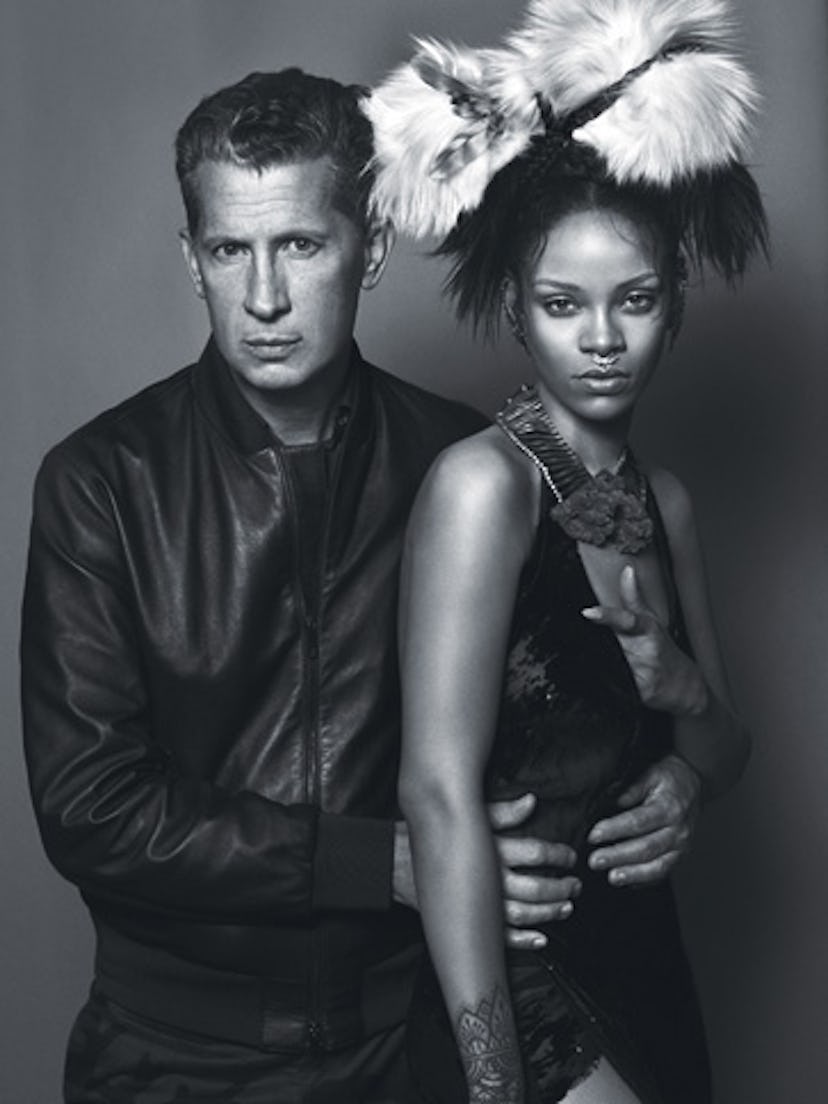September 2014 Editor’s Letter: Mood Boards

Though It has become cliche to say that fashion mirrors the society we live in, when I look at some of the ads in this issue, our biggest of the year, it seems as if fashion imagery is, indeed, chronicling our changing times—specifically, the ease with which we process different visuals in this increasingly digital age.
For his first ever campaign, newly appointed Loewe creative director Jonathan Anderson juxtaposed an image by Steven Meisel, originally published in 1997, with a still life of Loewe’s new It bag. Nicolas Ghesquière, now at the helm at Louis Vuitton, commissioned a series of shots by three top photographers—of the actress Charlotte Gainsbourg, different models, and still lifes of bags—then grouped them under the title “Series 1,” as if they were part of an exhibition that he curated for an art gallery. There is no clear relationship between the images in these advertisements—aside from the fact that Anderson and Ghesquière found them alluring and decided to combine them, perhaps referencing the creative mood boards that designers put together while conceiving a collection. Some are appropriated photographs, others are specifically created for the purpose at hand; some come from the past, and others look to the future. Still, they mesh perfectly well, without narrative or explanation.
The same seems to hold true in everyday life. By now we are used to all kinds of information coexisting on our phones, tablets, and laptops: An Instagram post of someone’s dinner vies for attention with a glamorous portrait by a famous photographer; a personal image of a loved one competes with a shot of a celebrity whose haircut we admire; a tweet from a friend comes seconds after a news report. On social media, we make our own gallery of pictures and commentary on a daily basis—remixing, juxtaposing, and repurposing everything almost unconsciously.
To be fair, artists have been deliberately playing with the idea of appropriation for decades—think of Richard Prince, whose most iconic works are based on Marlboro ads. But the Internet is taking the idea of the postmodern mash-up to a new level. Because everything lives online forever, old images can be suddenly revived, and new ones can feel immediately dated, depending on our mood. On the Web, anybody can be an author, photographer, or artist. Nowadays, creativity has more to do with context, spin, and characterization than with actual creation.
This cultural shift was evident on the fall runways, where designers did not shy away from acknowledging their inspirations. Miuccia Prada alluded to the heroines of Rainer Werner Fassbinder’s movies; to drive the point home, Barbara Sukowa, one of Fassbinder’s favorite actresses, sang Kurt Weill songs during the runway show. Hedi Slimane at Saint Laurent evoked the Chelsea girls of Swinging London. And Maria Grazia Chiuri and Pierpaolo Piccioli at Valentino were influenced by ’70s Italian artists Giosetta Fioroni, Carol Rama, and Carla Accardi.
Our editors and photographers followed these and other designers’ leads to deliver layered stories commenting on the season’s main trends and the state of fashion now, while simultaneously celebrating what we love from the past. Mert Alas and Marcus Piggott brought their own twist to the ubiquitous “new normal” trend with a combination of leather, denim, and underwear; Steven Klein invented characters for his favorite Martin Scorsese leading ladies to inhabit. Emma Summerton’s shoot of austere ensembles was inspired by Berlin architecture, Roe Ethridge went for sensual dresses that bring to mind the Polaroids of the Italian aesthete Carlo Mollino, and Willy Vanderperre gave traditional suits a breath of fresh air with obis and kimonos. Our cover star, Rihanna, came up with her own mental mood board, channeling the power of Grace Jones and the sophistication of Josephine Baker with fur, wild makeup, and extravagant accessories.
Finally, the writer Christopher Bagley spent time with one of fashion’s most discreet—and quietly powerful—women: Delphine Arnault, the daughter of LVMH head honcho Bernard Arnault. Delphine has been bringing to LVMH some of the most promising designers in the business and is spearheading a yearly competition to support emerging talent. Will she one day fill her father’s immaculate shoes? At the very least, it’s clear she understands that a new way of thinking calls for a new generation of creative thinkers.